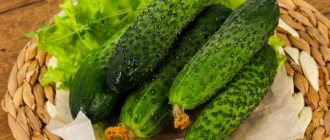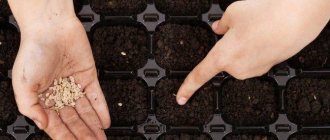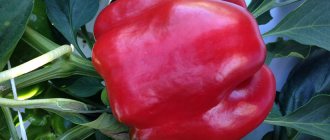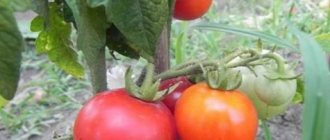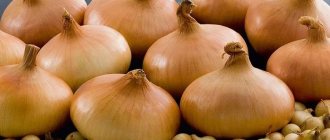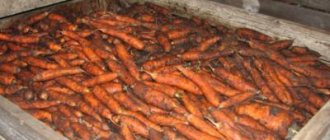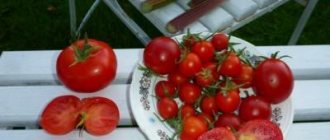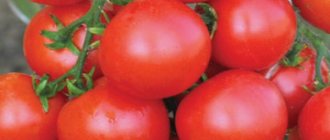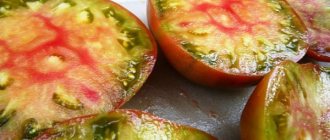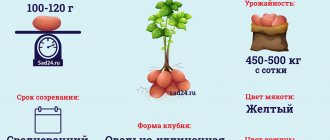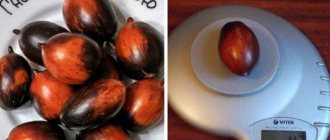Description and characteristics of onions of the Turbo variety
Turbo onion is a Dutch variety bred by specialists from SEED SUPPLY BV (Gelderland province). The culture spread across European countries and came to Russia. Included in the register of breeding achievements in 2015, approved for cultivation in all regions.
Appearance
The bulbs of the Turbo variety have a classic round shape, an average weight of 120-140 g, less often reaching 200 g. The scales are brown, quite bright in color. The number of dry scales is three, followed by juicy ones. The neck is of small thickness.
The greenery is emerald in color, the arrows are dense, the average height is 30-35 cm. A waxy coating is noticeable on the surface, protecting the tissue from frost and damage. The plant is a biennial crop. During the first year, yellow sets are grown, which practically do not increase in size, giving all their strength to the greenery. In the second year the turnip grows.
Turbo onion peel of bright golden hue
Ripening time and yield
Turbo onion belongs to the medium (mid-season) crops. At the same time, ripening is slow, so the harvest is harvested closer to the end of September - beginning of October (subject to standard planting dates). The main criterion is that the greenery begins to dry out en masse.
The ripening rate of root crops on the eve of harvesting is 77%, after ripening is completed – 97%. Shelf life is average - 4-5 months, transportability is good. Storage conditions are standard: temperature 2-5 degrees Celsius, dark place, humidity - up to 70%.
The yield of the variety is 5-8.5 kg per square meter, with industrial cultivation - 250-340 c/ha. The maximum figure – 661 c/ha – was registered in the Moscow region. Marketable yield by 20 c/ha compared to the standard onion variety Stuttgarter Riesen.
Resistance to diseases and pests
Resistance to diseases and pests is average. This onion variety can suffer from fungal and bacterial infections, as well as insects (onion fly, moth, thrips and others). Therefore, preventive treatments are carried out at the beginning of the season. Turbo onion plantings are periodically inspected and, if necessary, sprayed with solutions (folk remedies, fungicides, insecticides).
Composition and properties
The pulp of the Turbo onion is pure white and juicy. The taste is semi-sharp, the aroma is pleasant. The composition contains vitamins, microelements and other useful substances:
- vitamins C, E, PP, group B;
- phytoncides;
- glycosides;
- flavonoids;
- pectins;
- macro- and microelements (potassium, phosphorus, iron, sulfur and others).
Application
Due to its moderately pungent taste, Turbo onions are used fresh (in salads, appetizers), in various dishes and preparations. Since the bulbs can be stored for no more than four months, it is better to immediately send them for pickling and salting.
Growing regions
Turbo onions are unpretentious, so they can be grown in regions with different climatic conditions:
- middle lane;
- Volga region;
- Chernozem region;
- Ural;
- Western and Eastern Siberia;
- Far East.
Collection, storage and use of crops
Signs of ripened bulbs are yellowing and lodging of more than 25% of the green mass of all plants.
Harvest in dry, sunny weather in stages :
- They dig up and carefully pull out the bulbs.
- They are laid in the garden bed.
- Using scissors, carefully trim the roots and leaves, leaving a small tail 3 cm long.
- Vegetables are scattered under a drying shed.
- Sent for storage after the tails dry.
There are two ways to store onions:
- When it’s cold, provide a temperature of 0…+3°C in well-ventilated basements.
- When it is warm, the harvest is placed in cardboard boxes and kept at home at room temperature.
Store onions in dark rooms with air humidity not exceeding 70%. Vegetables are sorted regularly.
The Turbo variety is universal in use; the harvest can be stored for up to eight months. Application:
- fresh for salads or snacks;
- as a seasoning for preparing hot dishes;
- for preserving preparations for the winter.
Advantages and disadvantages
The main advantage of the Turbo bow is its good consumer qualities. The bulbs are convenient in size, attractive in appearance, and have a pleasant taste with moderate pungency. In the climatic conditions of Russia, they may not have time to fully ripen, so you cannot delay the planting time.
Turbo variety bulbs have a regular round shape and convenient sizes
Pros:
- high productivity;
- good taste;
- beautiful appearance;
- moderate winter hardiness;
- transportability;
- excellent germination in the second year.
Minuses:
- average keeping quality;
- long ripening period;
- if the bulb is not ripe, it may rot;
- low immunity to pests.
How is it different from other varieties?
| Variety name | Ripening period | Taste | Bulb weight (g) | Productivity (c/ha) |
| Turbo | Mid-season | Peninsular | 125-140 | 245-340 |
| Alonso F1 | Mid-early | Peninsular | 60-110 | 215-317 |
| Sherman F1 | Mid-season | Peninsular | 100-120 | 183 |
| Coupon F1 | mid-late | Peninsular | 70-80 | 164-414 |
| Redmate | mid-season | Peninsular | 90-105 | 358-496 |
| Mundo | mid-season | Peninsular | 80-100 | 265-360 |
When to plant Turbo onions
The timing of planting Turbo onions depends on the method of cultivation (seeds, sets), as well as on the climatic conditions of the region. The frost resistance of this crop is average, and the ripening rate is slow. Therefore, when selecting deadlines, it is recommended to focus on the following periods:
- Seeds are planted in open ground in the first half of May, when the soil warms up to a temperature of at least 10 degrees. You can check by burying the thermometer in the ground for 10-15 minutes.
- Seeds are also sown in open ground until mid-May.
- In the case of pre-winter sowing, they are planted in the first half of October (air temperature no higher than 5 degrees Celsius).
Winter varieties of seedlings
As you know, you can sow onions not only with the onset of spring, but also before winter. This means that you can find both regular and winter sets in gardening stores. Let's consider varieties representing the second category.
Sevok "Shakespeare"
Perhaps the most popular winter set is the Shakespeare variety. It grows into round, snow-white bulbs that have a tangy, but not too spicy, taste. Scales of this variety:
- not the usual red, but has a dark brown tint;
- dense, which perfectly helps it withstand frost during the cold season.
Other varieties can only envy the endurance of this variety. Harvest occurs approximately 2 weeks earlier than other varieties.
Sevok "Shakespeare"
Winter set "Radar"
If you provide this varietal variety of onions with proper care, you can grow heads weighing up to 300 grams. The white flesh of the bulb is covered with a golden-red shell. The yield of the variety is high, because germination is almost 100%.
The variety is not bitter, and its sets are sold everywhere, and deservedly enjoy the love of domestic gardeners.
Onion sets of the “Radar” variety
Sevok "Senshui Ellow"
An early ripening variety, “Senshui Ellow”, is perfectly adapted to survive in critically low temperatures for this crop, therefore it is successfully grown in the northern regions of the country. Another positive feature of it is that it does not go into the arrow. You can store such onions almost all winter.
The bulbs have a pungent taste, and they themselves:
- characterized by an average value;
- They also have average weight indicators, the fruit reaches a weight of 150 - 200 grams.
You can buy seedlings at any gardening store.
Sets of the "Senshui Ellow" variety
Sevok "Bamberger"
This variety was brought to our homeland and Germany. It can be classified as a mildly spicy onion. The shape of the turnip is elongated, the scales have a bright yellow tint.
The variety is medium hot, sweet, great for salads. It has one drawback: after harvesting it is stored for no longer than 5 months, but during this time, as a rule, it has time to be fully used.
While growing in the garden, it shows resistance:
- to the cold;
- insufficient watering.
If you like onions that make you cry, you'll find Bamberger too bland.
Sevok "Bamberger"
Prices for winter seedlings
Let's see how much money will have to be spent to purchase enough seedlings for planting.
Table 1. Prices for winter onion sets
| Variety | Price per 1 kilogram |
| "Shakespeare" | The price for sets of the specified variety varies between 210-230 rubles |
| "Radar" | Onion sets “Radar” will cost approximately “210-250 rubles” per kilogram. |
| "Bamberger" | Onions of the specified variety in the form of sets can be purchased at a price of 150-170 rubles |
| "Senshui Ellow" | Sevok of this variety will cost you an amount equal to 170-200 rubles per kilogram. |
Onion sets are not expensive, so don’t deny yourself the pleasure and buy several varieties at once
The price of high-quality onion sets of the best varieties, and not only those that we listed in the article, varies between 150-300 rubles. All varieties of interest are presented in stores in an assortment.
Methods for planting onions Turbo
Turbo onions can be grown in several ways:
- from seeds (for turnips and greens);
- from sets (for turnips);
- from sets (for greens, winter sowing).
Growing Turbo onions from seeds
A week before planting, Turbo onion seeds need to be prepared by following several steps:
- hold for half an hour in a weak solution of potassium permanganate;
- place in warm water for several hours;
- let dry at room temperature;
- soak for several hours in a solution of a growth stimulator (“Kornevin”, “Epin”);
- wrap in gauze, place on a saucer with water and keep for a week at room temperature.
The planting site should be open and protected from winds, without stagnant moisture (lowlands are excluded). The soil is fertile, light (loam or sandy loam). If the soil is depleted, it needs to be fertilized during digging by adding complex mineral (40 g per 1 m2) or organic fertilizer (compost, humus in the amount of 5 kg per 1 m2).
Before planting, mark several furrows 2 cm deep at a distance of 10 cm. Then the seeds are planted at intervals of 10 cm, sprinkled with soil and watered a little.
Seeds and sets are planted to a depth of 2 cm
Sowing seedlings in spring
Preparing the soil before planting Turbo onion sets is exactly the same. At the same time, the set itself also needs processing. Choose healthy seed without damage. The bulbs are heated for 6-8 hours at a temperature of 45 degrees.
Then pickle in a weak solution of potassium permanganate or fungicide for half an hour. Spread in one layer and leave to dry at room temperature. The planting pattern is similar - depth 2 cm, interval 10 cm, distance between furrows 50 cm.
Planting Turbo onions before winter
Planting before winter begins in October, when during the daytime the temperature does not rise above 5 degrees Celsius. The area is cleared, the soil is dug up and fertilized. The sets are prepared as described above and planted in the same way.
Attention! It is not recommended to plant Turbo onions too early. The sevok can begin to grow and shoot an arrow.
Basic Rules
The Turbo variety was created by the authors for cultivation through seeding according to a two-year scheme. It is not designed for growing from seeds, including seedlings, in one year. In the first year, from the sown nigella, onion sets are obtained, from which turnips are produced in the next season. Compared to annual onions, this method provides twice the yield and higher quality of onions.
Growing sets
Seed preparation
Turbo onions are not a first generation hybrid; they can be grown from their own seeds. Nigella is not infected with viruses or fungal spores; seed dressing is not required.
- To speed up germination, seeds are soaked in water for a day.
- Next, the nigella is laid out on a damp cloth for germination. To protect it from drying out, this is done in an airtight food container.
- The process ends when the seeds hatch. This takes 4-5 days depending on the temperature.
Tillage
The emerging shoots are initially weak and grow slowly. Weeds that shoot from their roots can easily choke them out. To avoid this, digging up the soil for nigella must be done twice: in the fall and in the spring, each time carefully selecting the roots of the weeds.
Attention!
You should not overfeed the onion bed with organic matter: the root crop in such soil will grow small and be susceptible to fungal diseases.
Sowing scheme and technology
The optimal size of onion sets is 1-2 cm. This can be achieved by choosing the desired thickening scheme.
- It all starts with marking the plantings. Grooves are marked across the bed.
- The row spacing is 10 cm, the seeds in the row are initially laid out in increments of 1-1.5 cm, followed by thinning to 2-3 cm after germination.
- A 1 cm deepening is done by sprinkling the grooves with loose substrate (humus, compost, peat).
Landing
Bulb processing
It starts with sorting out the seeds. Bulbs that have damage or signs of disease are removed. Bulbs with a diameter of 10-15 mm are most suitable for planting. Larger specimens have an increased risk of bolting. But in the spring they can be planted separately on a feather.
The bulbs are soaked for 15 minutes in a hot, bright pink solution of potassium permanganate or phytosporin, then washed with clean water.
What should the soil be like?
For spring planting, the beds are dug twice, in spring and autumn. This is an effective way to control weeds.
Advice
The main requirement for planting in winter is that the soil should not be waterlogged. It is necessary to prevent flooding of the beds by rain, melt or groundwater.
Pattern and depth of embedment
It is more convenient to plant seedlings in rows across the bed:
- The distance between them is 25 cm, the distance in a row is 10 cm.
- The bulbs are buried, the distance from the surface of the earth to the tail is 1-2 cm.
Care
The most labor-intensive maintenance operation is weed control. It can be minimized by mulching crops.
- Turbo is a moisture-loving variety, especially at the beginning of the growing season. However, excess moisture can lead to putrefactive lesions. Watering should be done as needed and no more than once a week. Watering is stopped 3 weeks before harvesting the turnips. At the same time, remove the mulch to allow the bulbs to dry in the sun.
- After the top layer of soil dries out after watering, it is loosened to aerate the root system.
- The growing season of the Turbo variety lasts from early May to late August - early September. During this time, it is necessary to carry out three feedings at the end of each calendar month. The first two are produced by a full mineral complex NPK (nitrogen, phosphorus, potassium), the third excludes nitrogen. The one-time norm is one matchbox per square meter.
Onion care Turbo
Onion Turbo does not require special care. Basic rules of agricultural technology:
- Moderate watering - the soil surface should have time to dry out. During drought, watering should be increased (at least once a week). Three weeks before harvest, water is no longer given, even if there is no rainfall.
- After each watering or heavy rain, the soil must be loosened. Thanks to this, the roots will receive enough oxygen.
- It is enough to fertilize twice a season. When the feathers grow to 10 cm, give organic matter (mullein, humates), and after another three weeks - complex fertilizer (30-40 g per 10 liters of water per 1 m2 of planting).
- Within two weeks, weeds will appear - from this moment on, regular weeding is done. To ensure that there are as few weeds as possible, the plantings are mulched with straw, grass clippings or sawdust.
- If necessary, treat onions from fungal infections and pests.
Features of cultivation
In most of Russia, Sturon is recommended for cultivation in a two-year crop:
- In the first year, seeds are sown to obtain sets - small bulbs.
- In the second season, the bulbs are planted in warm soil and a cash crop is harvested.
It is quite difficult to grow seedlings, and it is even more difficult to preserve them until next spring. Even experienced gardeners prefer to buy planting material at the beginning of the season.
If you sow nigella in early spring in cool regions, you will not be able to get a marketable bulb due to the small number of warm days - the variety is still mid-late, not early. Sturon cannot be grown there as a winter crop either - the planting material will simply freeze.
In warm regions, a satisfactory harvest can be obtained from nigella in one season, and the sets are planted in the fall - at the same time as winter garlic.
Optimal conditions
Onions come from Central Asia, hence its cultivation requirements:
- organically rich fertile soils with a slightly alkaline reaction, preferably loose loams or sandy loams;
- long daylight hours;
- warm weather;
- open, sunny place;
- dry air and soil at the time of turnip ripening.
Sturon doesn't like:
- poorly lit landing site;
- acidic, soaking soils;
- high air and soil humidity, especially at the time of crop ripening;
- although onions can withstand slight frosts, a decrease in temperature to -5-6°C causes bolting;
- excessive fertilizing, especially those containing nitrogen.
The soil should be dug up no later than 2 weeks before planting the crop. During this time, it will sag a little, and the onion set will not fail. You need to select all the stones, roots of weeds, and break up clods of earth.
Even on chernozems, when digging, it is recommended to add a bucket of well-rotted humus and a tablespoon of azofoska per square meter of bed. If necessary, soils are deoxidized with ash, lime, and dolomite flour. The application rate depends on the composition of the soil on the site and is calculated individually.
Before planting, onions must be processed. Sturon is generally a fairly healthy and reliable variety. But during storage, the seedlings tend to be affected by various rots; pathogenic spores and pest larvae remain and develop under the covering scales.
The onions are placed in a plastic bag, sprinkled with karbofos, tied and left for a day. Then the Sturon turnip is dipped in a pink solution of potassium permanganate for half an hour.
Landing
- First, trenches are formed with a depth of 5-7 cm, placing them at a distance of 15-20 cm.
- The bottom of the trench is covered with a layer of sand (2 cm).
- Every 12-15 cm, seedlings are planted with the bottom down.
- Cover with fertile soil.
- Don't water.
Planting of Sturon onions begins during the flowering of bird cherry - this is universal advice suitable for all regions.
In cool regions, just in case, the bed is covered with white spunbond with a density of 17-30 g/m2.
Care
Watering onions should be regular, but not excessive, only at the beginning of the growing season. From July, soil moisture is replaced by loosening.
Onions of the Sturon variety need little feeding:
- as soon as the threat of night frosts has passed, the crop is watered with a solution of potassium and calcium nitrate (1 tablespoon per 10 liters of water);
- after the formation of 5-6 leaves, give phosphorus-potassium fertilizer (without nitrogen).
You cannot fertilize onions with fresh manure.
If flower shoots appear, they are removed as early as possible. You cannot break onion feathers or tear them for food - pests immediately colonize the resulting wounds and pathogens enter. At the same time, the turnip is formed small, and it needs more time to fully ripen.
Harvesting
Sturon is ready for harvesting when the feathers begin to turn yellow and fall off. To harvest, you need to choose a dry, sunny morning. The turnip is dug up with a pitchfork, shaken off the soil and left in the garden until the evening.
Then the onions are transferred to a dry, ventilated place, laid out in one layer or tied in bunches and hung upside down. When the tops dry, they can be cut off, leaving a column of 1.5-2 cm, or braided. Excess scales are exfoliated. The roots are cut so as not to damage the bottom.
Sturon is one of the best onion varieties on the domestic market. It is grown by gardeners in their garden plots and on large farms.
Disease and pest control
The Turbo variety is not highly resistant to diseases, so prevention must be observed:
- do not overuse watering;
- periodically loosen the soil and remove weeds;
- follow the rules of crop rotation (do not grow in the same place for more than four years in a row).
To prevent onions from suffering from diseases, the sets are pickled in potassium permanganate before planting.
If signs of damage are detected (bacterial, gray, fusarium rot, downy mildew), it is necessary to treat with folk remedies:
- infusion of wood ash;
- onion peel decoction;
- whey solution.
You can also use fungicides - “Alirin”, Fitosporin”, “Skor”, “Tattu” and others. If insects are detected (onion fly, moth, thrips, mite), also spray the onion plantings with Turbo using folk remedies. In extreme cases, you can use insecticides - “Fitoverm”, “Match”, “Karate”, “Inta-Vir”, “Decis” and others.
Attention! Chemicals may accumulate in Turbo onion greens. Therefore, after using the drugs, you should wait a few days, after which you can harvest.
Reviews
Sturon is a favorite variety. Always large and stored well until next summer, although it loses its juiciness, it does not spoil, even if the season was rainy. I store them in plastic boxes and go through them periodically. Spicy onions, we love them that way. Although sometimes the onion fly strikes and shrinks without watering in the heat.
Irina
We love Sturon too. The onion is large, juicy, moderately spicy. Productivity is high. We dig in early August. It is stored perfectly, it has not even sprouted in March.
Olga
Every year we plant storon from sets. This is a hybrid of short daylight hours. A good mid-early hybrid, can be stored for a long time - up to 8 months. Bulbs average 80-100 g, some heads up to 200-250 g. The taste is slightly spicy, milder than Stuttgarten and more productive. The main thing is to buy high-quality sets, not just anything from the market.
Alexander, Minsk

